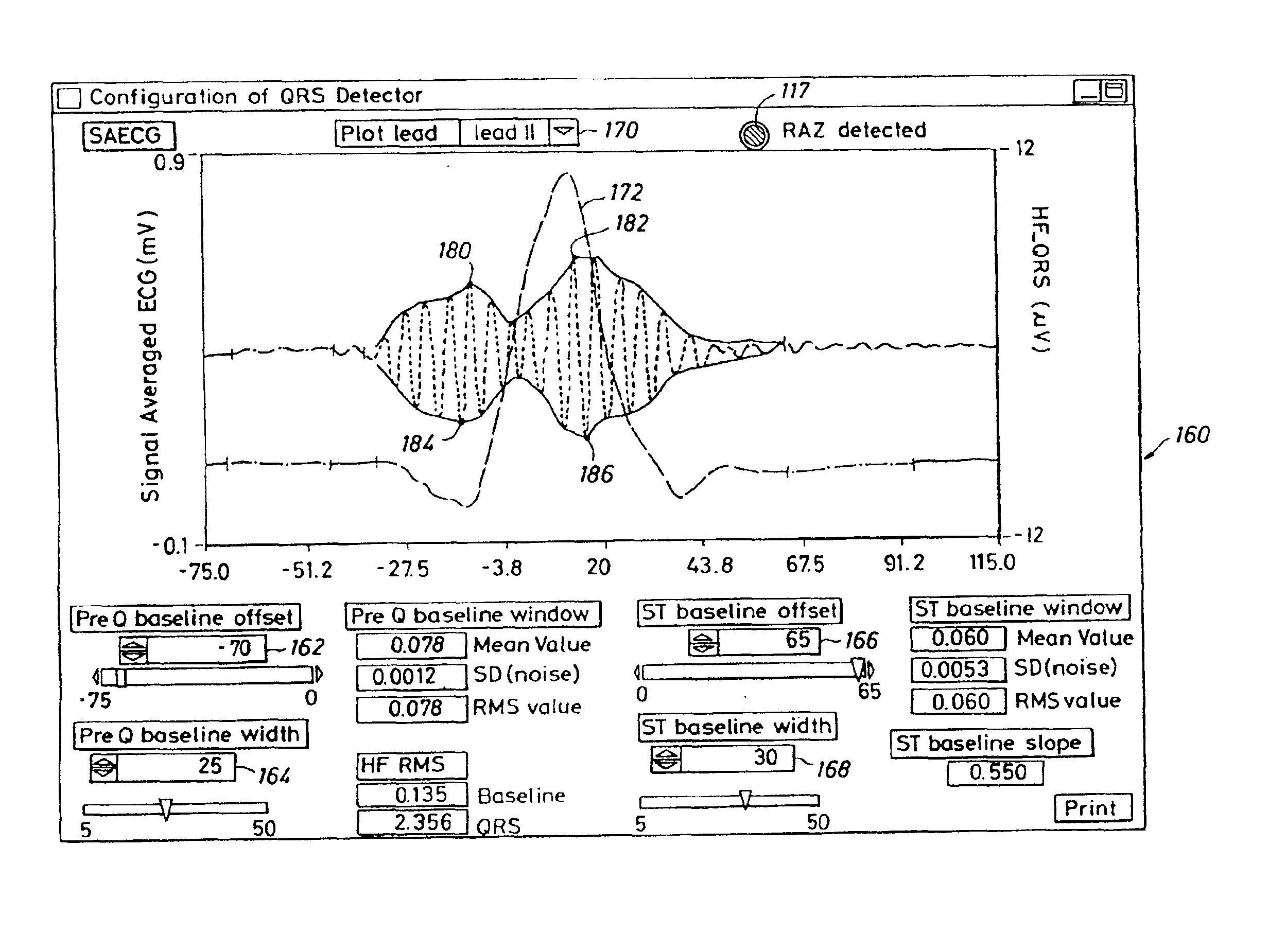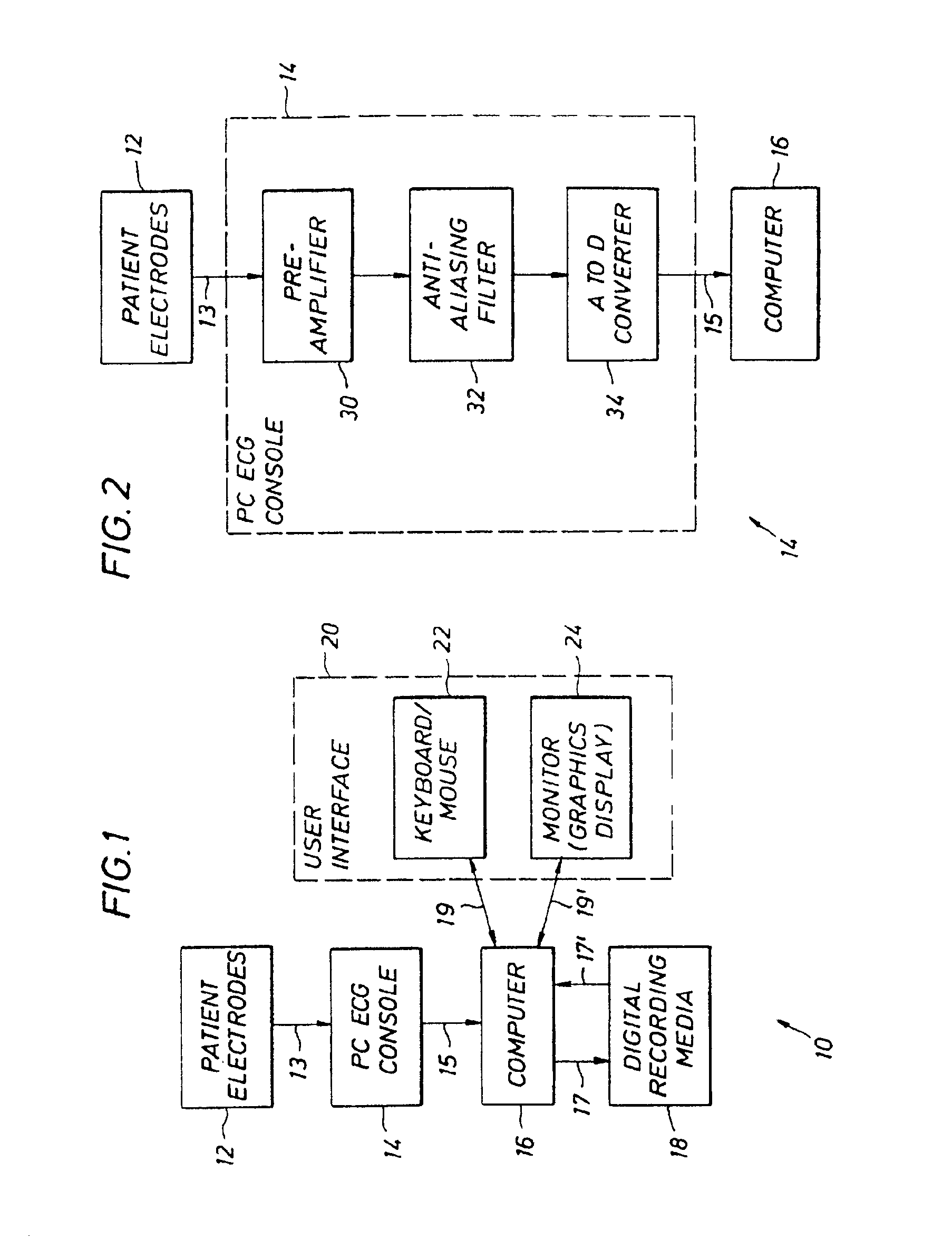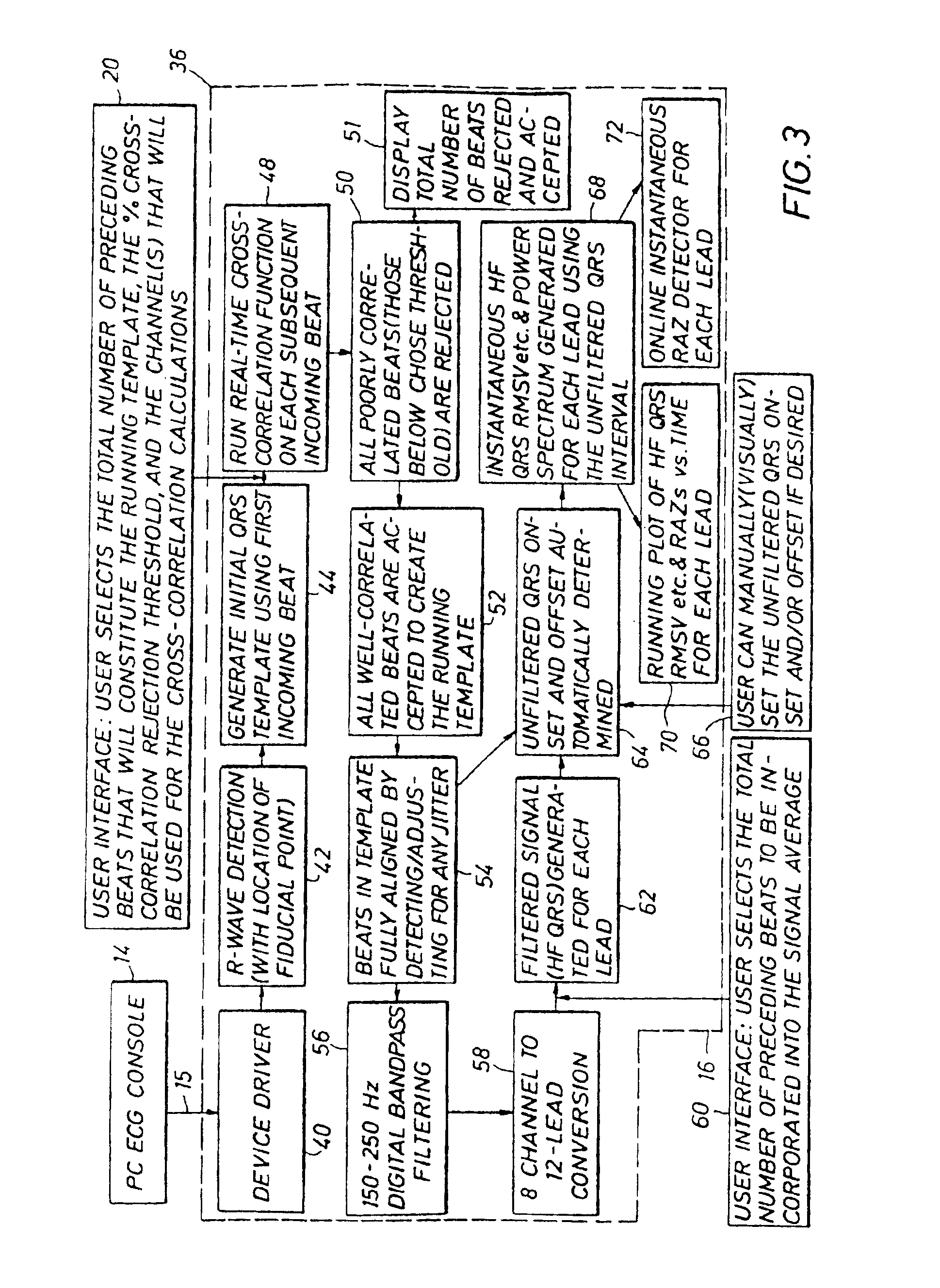Real-time, high frequency QRS electrocardiograph
- Summary
- Abstract
- Description
- Claims
- Application Information
AI Technical Summary
Benefits of technology
Problems solved by technology
Method used
Image
Examples
Embodiment Construction
[0030]FIG. 1 shows a simplified, functional, block diagram of a real-time high frequency QRS electrocardiograph 10 constructed in accordance with the present invention. The invention monitors the cardiac function of a patient with a plurality of patient electrodes 12. The electrodes provide measurements of cardiac electrical function at various contact points on the skin of a patient in the conventional manner. For example, in the conventional 12-lead configuration, 10 electrodes placed upon the skin of the patient in the conventional configuration result in eight channels of incoming data. These eight channels are in turn translated into 12 leads of data on the patient monitor inasmuch as data for one of the bipolar limb leads and for all of the augmented unipolar limb leads can be derived if data for any two of the bipolar limb leads are already known. The analog measurements are coupled to a console 14 by way of a communications channel such as for example a cable 13. The console...
PUM
 Login to View More
Login to View More Abstract
Description
Claims
Application Information
 Login to View More
Login to View More - R&D
- Intellectual Property
- Life Sciences
- Materials
- Tech Scout
- Unparalleled Data Quality
- Higher Quality Content
- 60% Fewer Hallucinations
Browse by: Latest US Patents, China's latest patents, Technical Efficacy Thesaurus, Application Domain, Technology Topic, Popular Technical Reports.
© 2025 PatSnap. All rights reserved.Legal|Privacy policy|Modern Slavery Act Transparency Statement|Sitemap|About US| Contact US: help@patsnap.com



